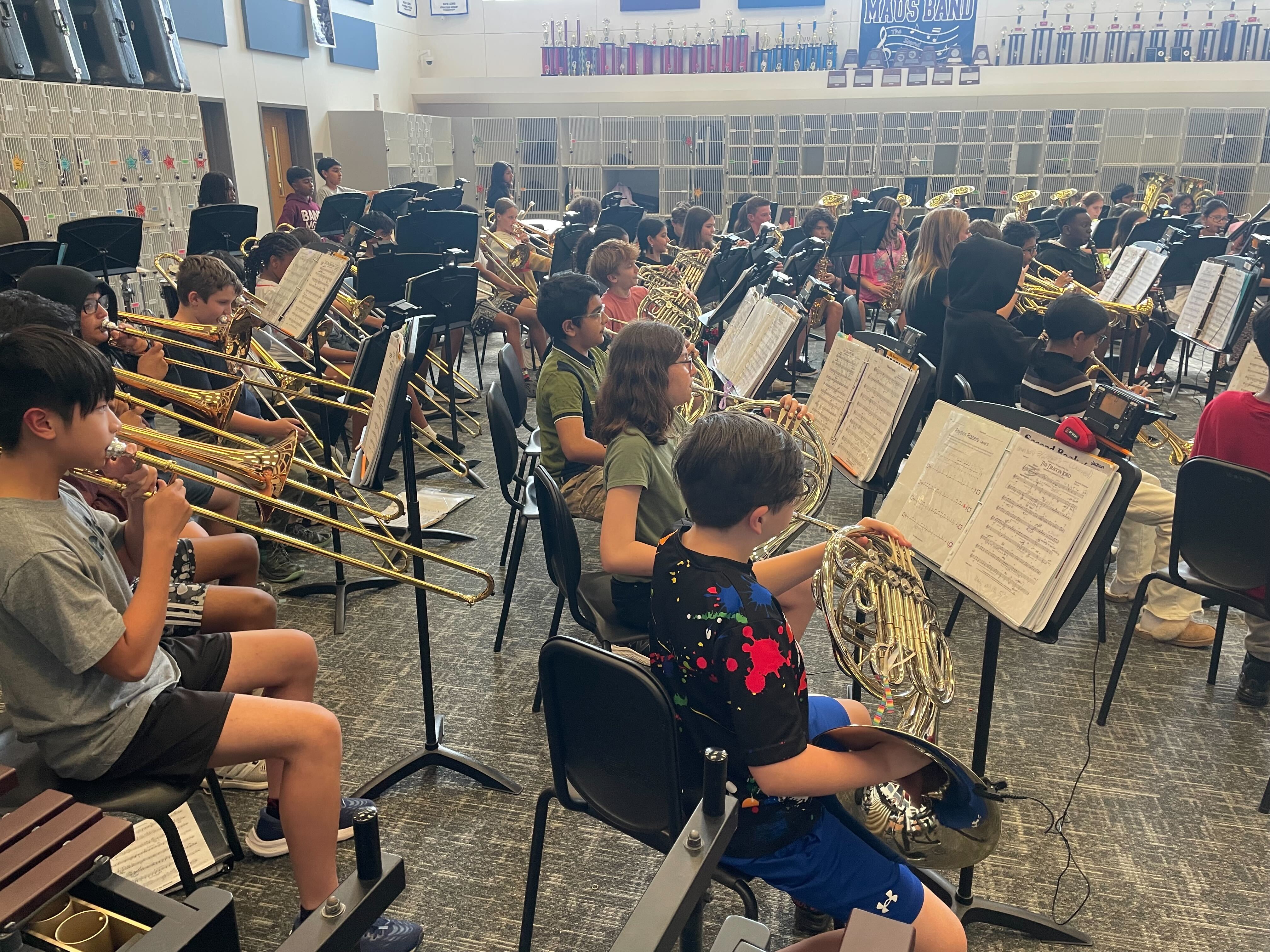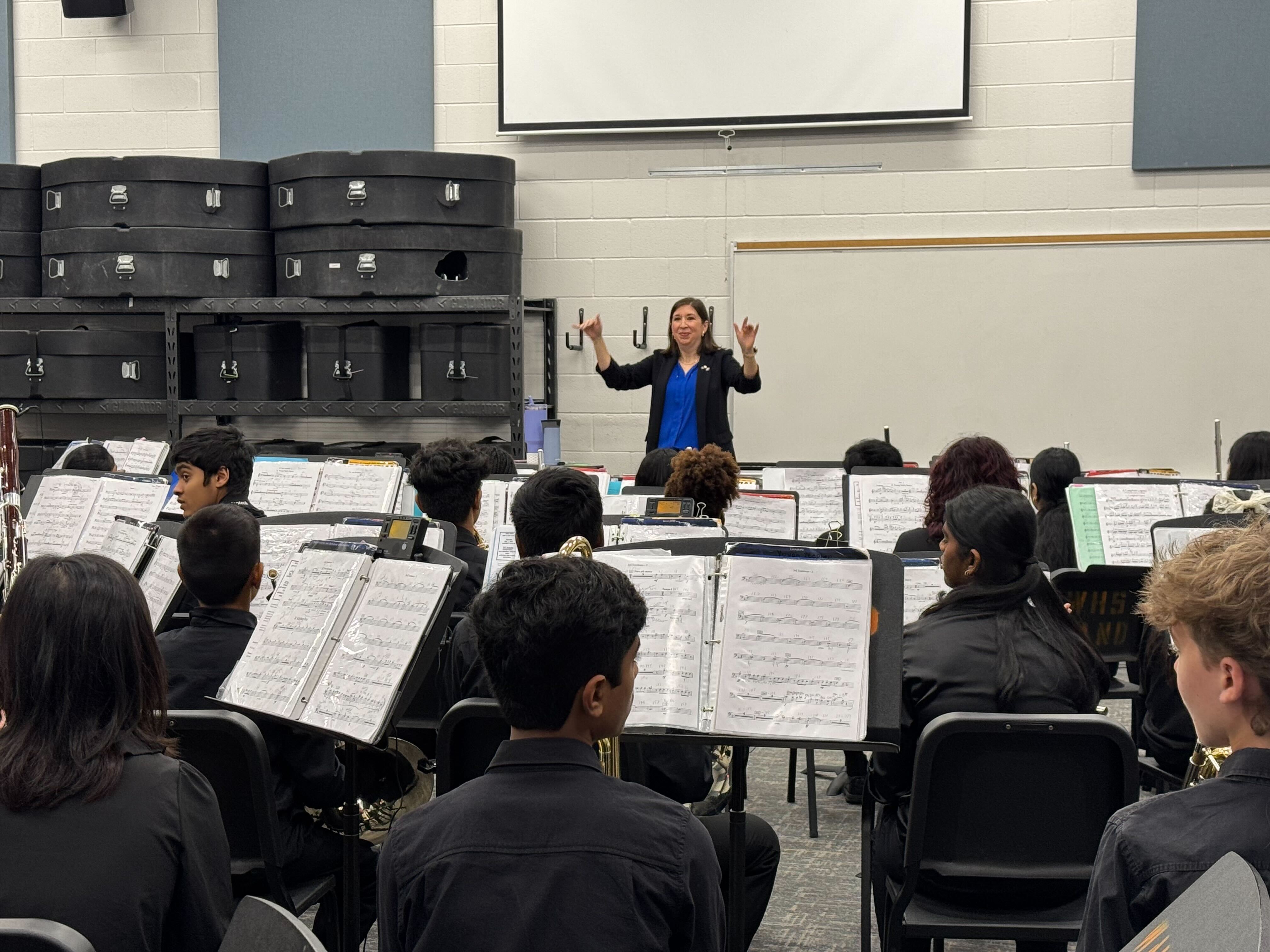Successful music programming is the key element to year long success and growth. With thoughtful strategy, deep knowledge of your students, and intentional teaching, you can create an ideal learning environment.
Start by asking yourself,“What music will help this particular group of students grow, be engaged, and shine this year?” That question drives the process of creating a living wishlist of literature for your ensemble.
Lenses for Literature Selection
Before choosing a piece, it’s essential to assess your band - not just their technical level, but their musical literacy and potential. Think about how you want to shape them over the course of the year. Great programming is an act of backwards planning. You start with the end goals in mind, and select music that supports those goals while providing an educational framework for success.
When evaluating music, I always filter my options through four critical lenses: Instrumentation, Strengths and Weaknesses, Educational Value, and the Fun Factor. Each plays a unique role in shaping both student experiences and ensemble success.
1. Instrumentation
The best piece in the world will not sound good or be fun to learn if your band isn’t equipped to play it well. Always start by looking at your ensemble and knowing its potential.
- Do you have the right instrumentation to pull off the piece’s intended color, textures, and balance?
- Will it overexpose weak sections or leave your percussionists bored?
- Will balancing the music be too difficult for the group you have?
Sometimes, you can rewrite or rescore parts, but ideally, you’re choosing music that naturally fits your ensemble’s strengths and hides their weaknesses.
2. Strengths and Weaknesses
Every band has its stars just looking to shine! Choose pieces that let them do that, but also think about your ensemble’s areas for improvement.
- Are there exposed passages where weaker sections might struggle?
- Does the piece require advanced rhythms or ensemble precision that might be out of reach?
Be sure to find pieces that showcase your best sections. When you acknowledge your ensemble’s limitations and potential, you can program music that not only meets their educational needs, but challenges them as well.
3. Educational Value
Literature selection should allow for obvious individual and ensemble growth throughout the year. Check each piece’s educational profile for how it could benefit your band.
- Key and time signatures: Does it reinforce previously learned concepts or introduce new ones?
- Rhythmic vocabulary: Are students reading and interpreting rhythms that challenge and develop their fluency?
- Technical demand: Are students required to move through registers, articulate clearly, or navigate tricky fingerings?
Each piece should help build the foundation of musical literacy, which will create a well rounded life-long musician.
4. Fun Factor!
Students are more likely to engage deeply when they enjoy the music! Choose music that excites them and has them craving practice time.
- Does this piece have a story or an energy that will draw students in?
- Is the writing style fresh or familiar in a way that will appeal? Is it a composer they like?
- Would you want to play it?
A piece isn’t going to come together easily if your students dread rehearsing it. Find the balance between educational value and fun!
Score and Parts Study: Don’t Skip your Homework!
It’s tempting to choose literature based on a professional recording, but smart programming requires deep familiarity. Always take time to examine not just the full score, but individual parts:
- Are there fingerings or accidentals that could trip up younger players?
- Can the students perform articulations at the correct tempo?
- Are there passages that students will not be able to count rhythmically?
When examining student parts, I mark their parts with accidentals, new rhythms, alternate fingerings, phrasing considerations, etc. Taking the time to pre-mark THEIR parts allows me to have an in depth knowledge of the piece’s demands and overall structure.
When studying the score, you can structure rehearsals in an organized manner. Be sure to allot enough time to teach the pieces of music to a high level within your timeline. I look for places where sectional instruction will be necessary, and ensure this aligns with lesson planning so I am not bogged down on the podium.

Literature Lineup for the Year
Rather than programming concert by concert, backwards plan with the end goals in mind.
Fall: Foundation and Assessment
- Identify your ensemble’s baseline strengths.
- Choose repertoire that reveals strengths and what you still need to strengthen.
- Include All-Region music or solo/ensemble prep where appropriate.
Winter: Showcase and Stretch
- Program a more musically mature program.
- Highlight soloists and develop ensemble abilities.
- Include literature that will be similar to your spring concert pieces when possible.
UIL: Focus and Refine
- Choose music that shows off your band’s strengths and stars.
- Focus on the details and enjoy the process of learning with the students.
- Don’t over-program or run out of time. If you have been structuring your literature lineup all year and choosing music that fits your ensemble, this likely will not occur.
Spring: Celebrate and Look Ahead
- Pick something fun and popular!
- Try one “stretch” piece to give a taste of what’s coming next year.
- Allow the students to have a say in choosing a piece!
Create Your Living Wishlist
Throughout the year, maintain a living wishlist of pieces you hear online, discover at clinics, hear about through colleagues, or on podcasts. This allows you to always have ideas ready to go. When you are intentional with your literature selection, it fosters skill, sparks curiosity, and leaves students feeling accomplished. It’s one of the most important decisions we make as directors each year, so have fun creating your living wishlist for the future!


